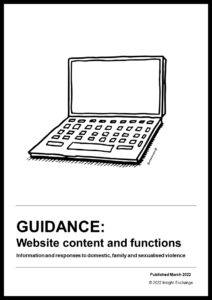No Hidden Door
We see in the Insight Exchange animation ‘Seeing Possibilities’ (6mins) that every sector is a possible door to information and support for victim-survivors of domestic, sexualised and family violence. Because safety and communication are inextricably linked, victim-survivors rely on the quality of public-facing communication, and this includes website content and user experience. They rely on websites to be informing, affirming and safe to browse. Victim-survivors may only browse the website but never contact or use the organisation directly, however we cannot underestimate the immediate and enduring value of communication.
The name ‘No Hidden Door’ highlights the importance of auditing the ‘doors’ to information that are currently available to victim-survivors of domestic, family and sexualised violence (DFSV).
People experiencing DFSV rely on multiple parts of a complex information and support ecosystem for their safety and wellbeing. The more disparity there is between different parts of the ecosystem, the tougher and more compromising it is for victim-survivors to access information and to navigate support. People using violence and abuse are more able to extend their use of abuse and control when information and communication about DFSV and support services are opaque, unclear or unsafe to access.
Together we can uplift communications across the ecosystem, identifying and closing gaps in our communication. Making sure no 'door' to information and support is hidden, and every 'door' offers a safe, supported discreet experience for victim-survivors of DFSV and their supporting family and friends.
No Hidden Door Reports
Between October and December 2021, Insight Exchange audited 200+ websites from five industries as sample doors in the information and support ecosystem. The selection of industries is not exclusive or exhaustive.
No Hidden Door Collection | This collection (presented below) was commissioned in 2022 by Insight Exchange. This collection of original artworks was created by collaborating artist Louise Whelan. The artworks are designed to illuminate the importance of making the ‘door’ of responding services/organisations more visible to the public, and valued ongoingly by industry as a social response to victim-survivors of domestic, family and sexualised violence.
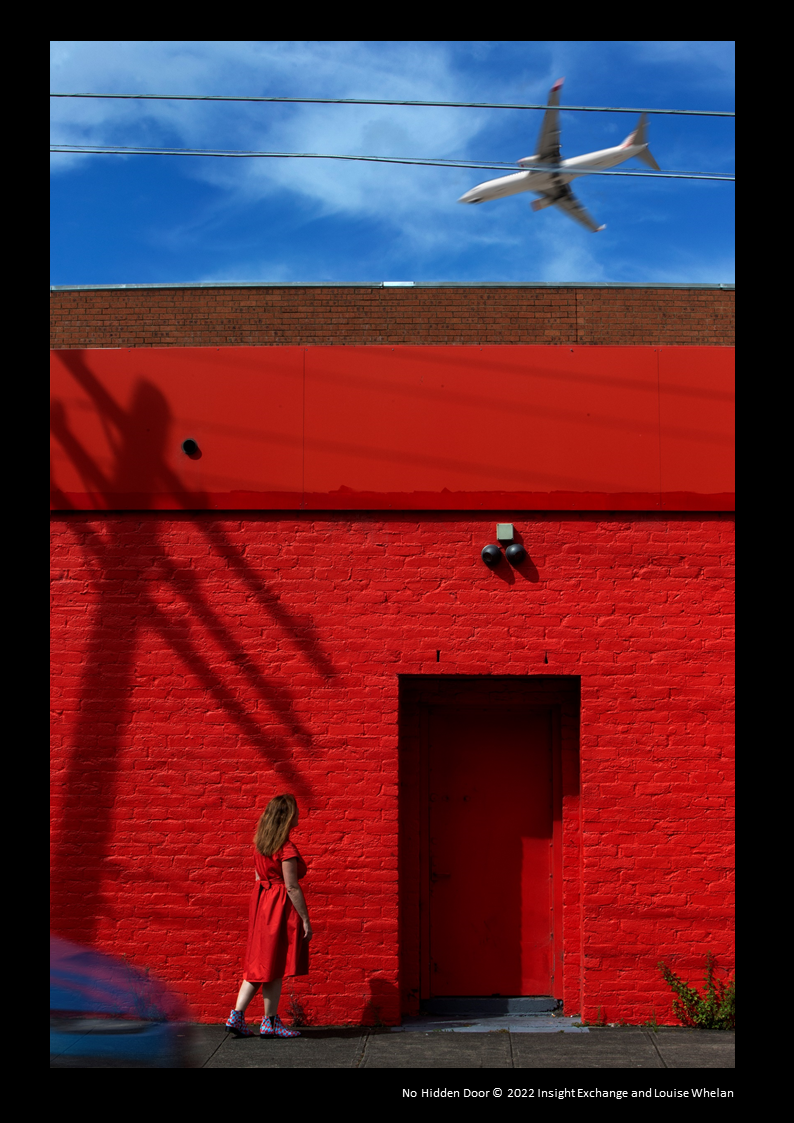
Red Door | Red alert. Anyone, anywhere anytime. Hovering near the access of a hidden door, layered with dominating sharp-edged shadows. Will I be heard amongst the noise?
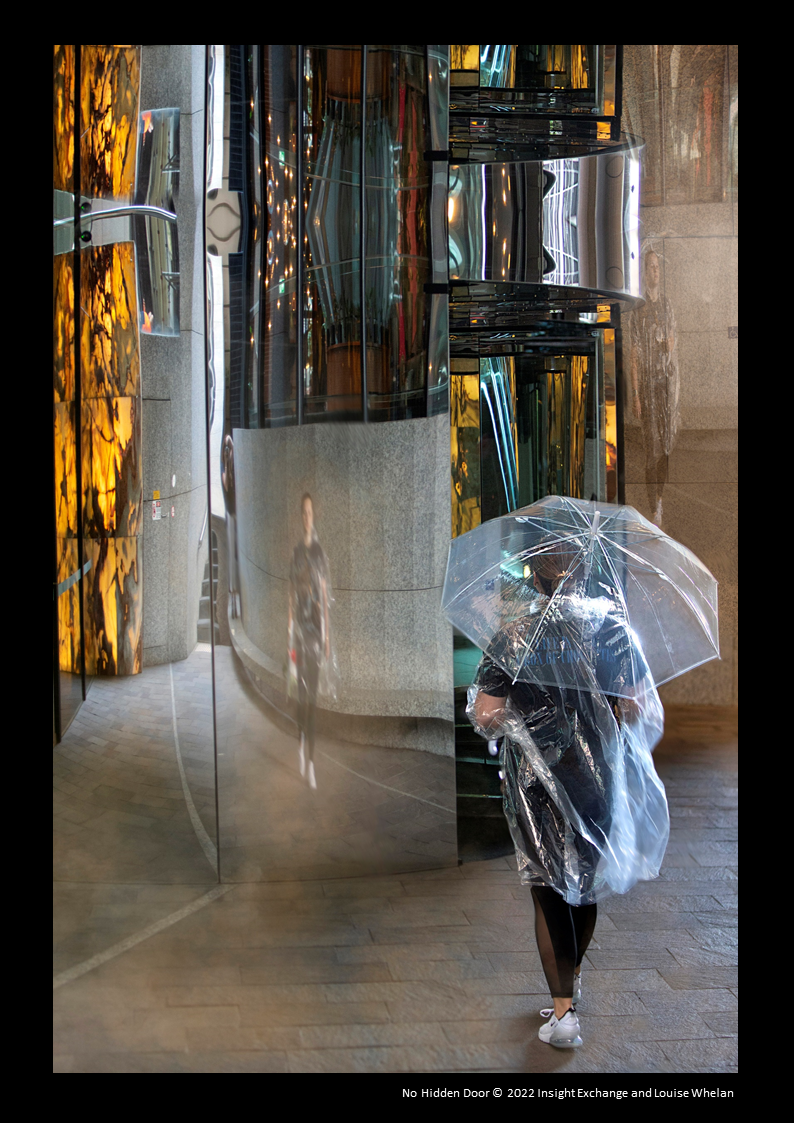
Smoke and Mirrors | A collage of opportunity, in this maze of revolving potential access. The duality of the smoke and mirrors intended to disguise or draw attention away from the often-unpleasant issue. I am prepared and ready. Will I find the right door to enter?
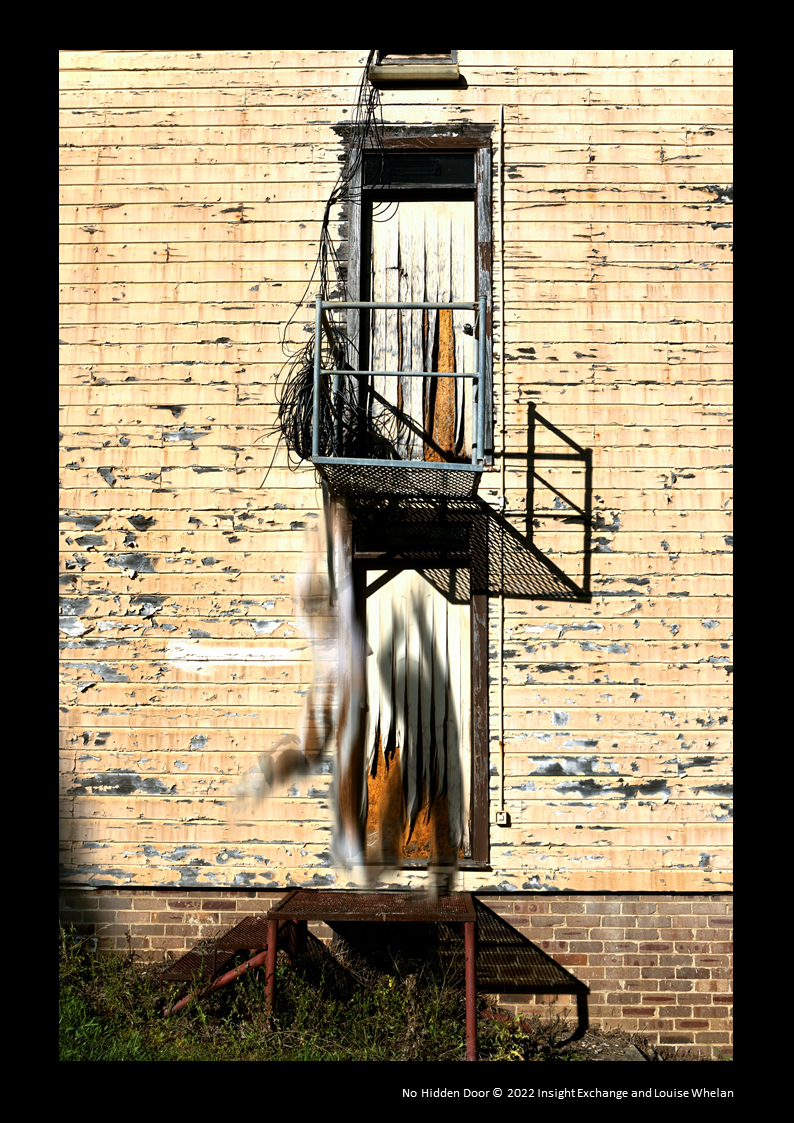
Old Double Doors | I feel like I am liaising with the unseen, my effort seems futile. Will my safety be compromised by entering? Have I come to the right place? Is anyone even expecting me?
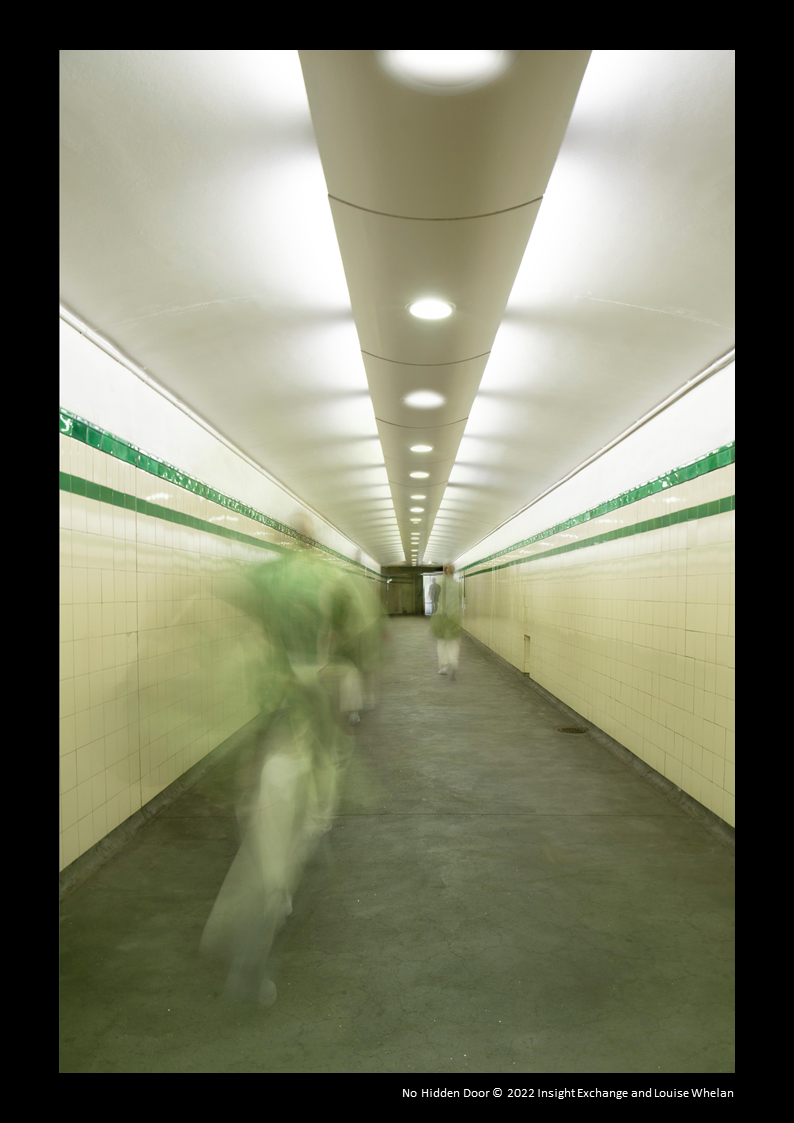
Tunnel | Traces of the human computer interactions with this relentless quest for help. Time passes through me. Am I in a void? Will I ever pass through the door?
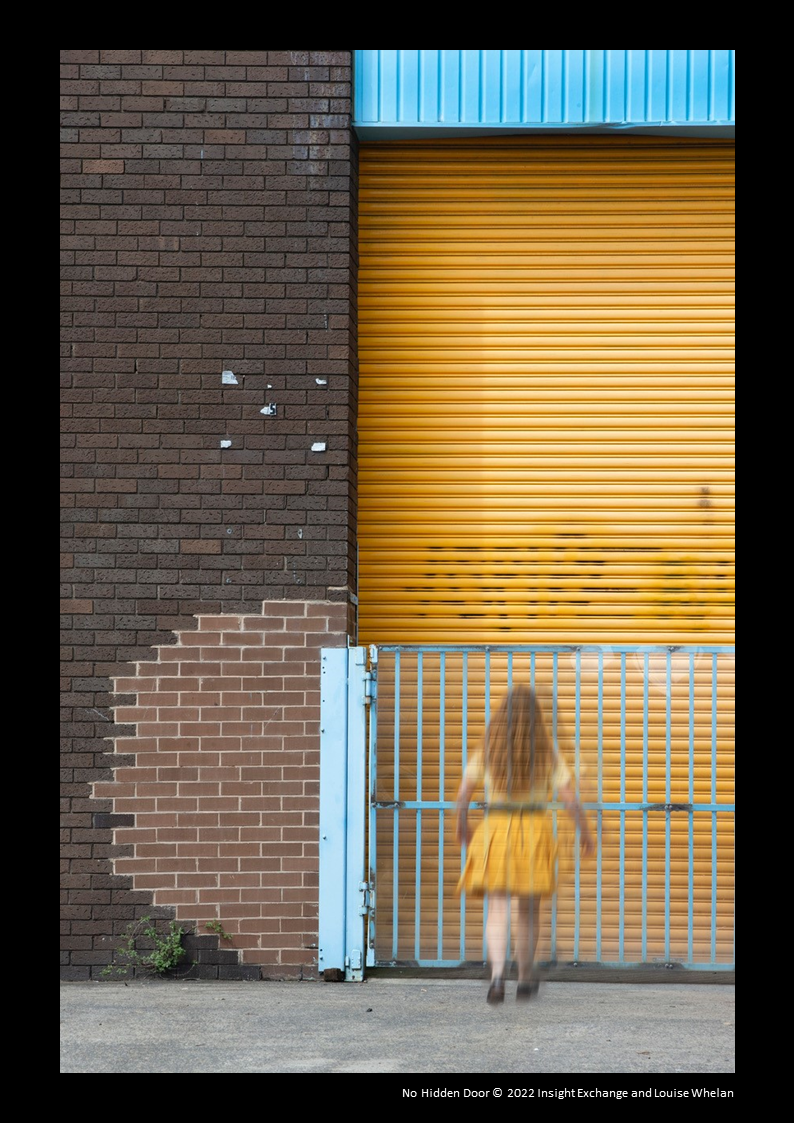
Yellow Door | Embodied in the access of this forced entry, I see people have been here before me. They have left me clues that I cannot read. No sign posting for easy access. Is my problem worthy of a response? Do I have the right to gain access?
Each artwork amplifies the unique and changing needs of victim-survivors who may be reaching out for the first, only or last time to find information and/or to seek support. The collection amplifies how the burden of effort to find, ask and communicate often rests on the victim-survivor. This is contrasted with the lack of communication from the service/institutional ‘door’ which is shown to be obscure, unclear or unkept. The burden of effort must shift from the victim-survivor to the service and institution. Each ‘door’ needs to be made more visible and the human experience offered to victim-survivors more ‘discreet, dignified and supportive’.
Open the No Hidden Door collection in a lightbox via the Arts Lab Collection page
View the Artist talk (8.5mins) | No Hidden Door Collection
Read the Artist statement | No Hidden Door Collection | Louise Whelan
Share your response to the collection (artworks and/or artist talk)
No Hidden Door Collection | Artworks © Louise Whelan.
These artworks were developed in with Insight Exchange and each image is protected by copyright. To use No Hidden Door images permission must be sought from Insight Exchange – Apply here
Guidance: Website content and functions
This guidance is for industry employees responsible for designing, developing and delivering communications relating to DFSV, with a particular focus on digital platforms (websites).
Industries can use this guidance to inform and influence the design of content and functions on their website to communicate directly with DFSV victim-survivors. This guidance is designed to support reflection, validate the lived experiences of victim-survivors, provide access to information, and raise awareness of victim-survivors’ available options.
Scope and Limitations: The guidance focuses on content and function, not on software, aesthetic design or user navigation. Identifying and addressing gaps in website content and function is vital. Victim-survivors of DFSV also rely on the organisations’ broader commitment to cultural safety, accessibility, diversity and inclusion.
Review comments | No Hidden Door
Share your feedback about what value (if any) this concept, these reports, this collection and/or guidance hold for you as someone with lived experience of domestic, family and sexualised violence or in your efforts as a responder. Use the Contact Us page to share your comments or provide de-identified comments here.
‘Whilst undertaking an audit of our Women’s Shelter website, I was excited to come across Insight Exchange’s ‘No Hidden Door’s’ Report. This report provided invaluable guidance, ideas and resources relating to consistent messaging for women who are subject to family, domestic and sexualised violence. Whilst the report was overflowing with valuable information, it was clear the authors were genuinely passionate about helping women who are in need!’
Senior Lecturer in Law (UNE) and Member of the Management Committee of the Armidale Women’s Shelter.


